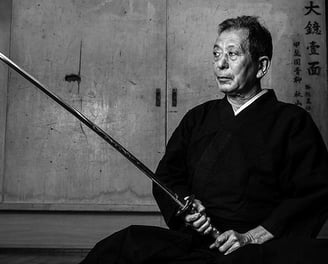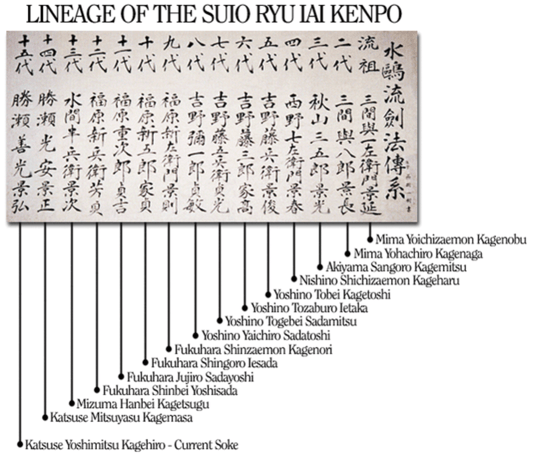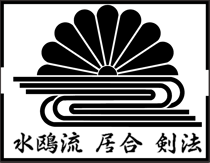Suiō-ryū Iai Kenpō
During Japan’s feudal period, numerous martial schools emerged to train the samurai class in the art of combat with a wide range of weapons. These traditions, known today as koryū bujutsu (古流武術, classical martial arts), developed their own techniques, strategies, and transmission methods, carefully preserved and passed down from generation to generation.
With the modernization of Japan and the abolition of the samurai class in the late 19th century, many of these schools disappeared, while others evolved into the modern martial arts (gendai budō, 現代武道) such as judo, kendo, or aikido. However, some koryū have managed to survive to this day, offering a direct connection to the martial, technical, and cultural heritage of classical Japan.
Suiō-ryū Iai Kenpō (水鷗流居合剣法), founded in 1615 by Mima Yoichizaemon Kagenobu, is one of these living traditions. It is a sōgō bujutsu (総合武術), or comprehensive martial system, whose extensive curriculum includes iai kenpō (iaijutsu, rapid sword-drawing techniques), kenpō (kenjutsu, Japanese fencing), jōhō (jōjutsu, staff techniques), wakizashi (short sword), kogusoku (grappling in armor), naginatajutsu (pole weapon), tanjōjutsu (short stick), and kusarigamajutsu (chain and sickle), among others.
Training includes both solo forms and paired practice, with a focus on realistic application and faithful preservation of the tradition. Since its founding, Suiō-ryū has been passed down in an unbroken line from master to disciple, and is currently led by its 15th headmaster (sōke), Katsuse Yoshimitsu Kagehiro, who teaches from the Hekiunkan, the school’s main dōjō located in Shimizu, in Shizuoka Prefecture, Japan.


Fotografía: Brent Stirton


Sui O Ryu® y otros derivados del nombre están registrados. No está permitido su uso sin autorización.
